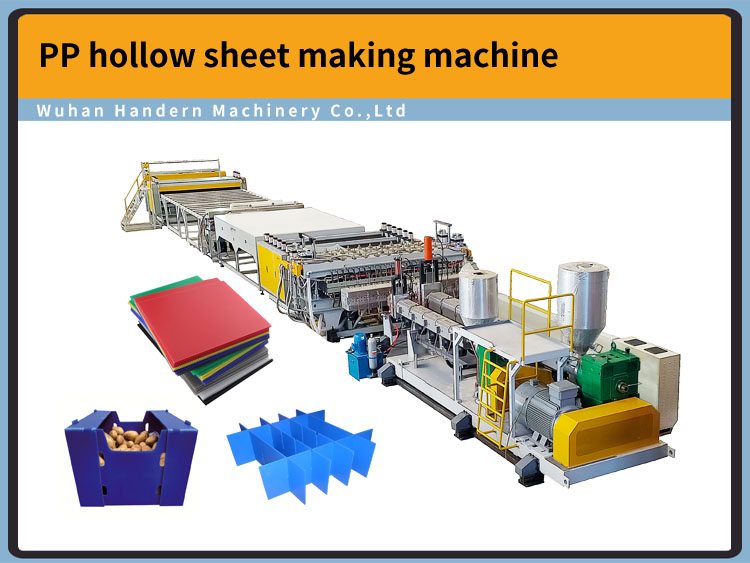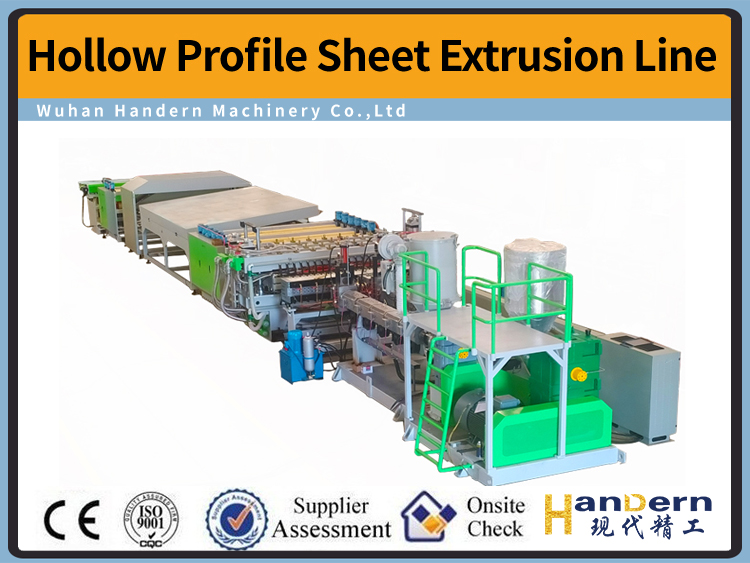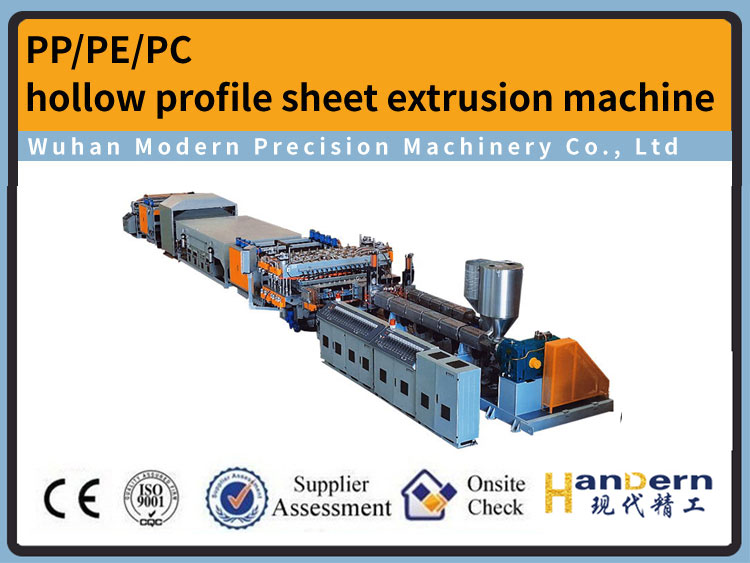Plastic film extrusion
DATE:2022/10/11 8:32:09 / READ: / SOURCE:This station
Plastic film extrusion
The clearance and air pressure knife edge clearance are about 3mm, and the blowing air pressure is about 0.5MPa.E Process parameters of longitudinal stretching diaphragm: the temperature of preheating roller working surface is 130~150 ℃, and the temperature of stretching roller working surface is 145~155 ℃; The multiple of the longitudinally stretched diaphragm (determined according to the thickness of the diaphragm and the thickness of the finished film) is generally 5~6 times; The rotation speed of low speed roller for longitudinal stretching is 3~30m/min, and that of high speed roller is 15+150m/min. F Process parameters of transverse stretching diaphragm: preheating temperature of diaphragm is 165~170 ℃, stretching temperature is 160~170 ℃, and film setting temperature after stretching is 165~175 ℃; The transverse stretching diaphragm is generally 5-7 times.
(3) Key points of process operation for drawing film
① The main raw material polypropylene resin is generally packaged well without drying treatment. For some auxiliary materials easy to absorb moisture, they should be dried before being put into production.
② The main raw materials and auxiliary materials shall be measured accurately and mixed evenly according to the formula requirements, and the recycled materials shall be clean and free of impurities.
③ The length diameter ratio of the main raw material plasticizing screw L/D ≥ 30:1, and the barrier screw structure at the homogenizing section of the screw shall be selected as far as possible. The raw materials are evenly mixed and plasticized, the melt extrusion amount is stable, and the extrusion temperature is as low as possible.
④ The mesh number of the filter screen shall be determined according to the quality requirements of the product. The common mesh numbers are 80, 100 and 120. Use ram type quick screen changing device.
⑤ The forming die structure shall be of coat hanger shape as far as possible, and shall be made of alloy steel with high temperature resistance and small deformation. The temperature of the die shall be controlled by sections according to the flow rate of molten material at each part of the die lip. Generally, the temperature at both ends of the die shall be slightly higher than the temperature at the middle part of the die, and the die lip gap shall be easy to adjust.
⑥ The distance between the working surface of the cooling and setting roller and the die lip should be as small as possible to reduce the contraction of the width of the casting film. The rotational speed of the roller should match the casting speed of the melted material from the die mouth (generally, the roller speed is slightly faster than the casting speed of the melted material). In order to improve the cooling effect of the roller and maintain the uniform temperature of the roller surface, it is recommended to select a roller with a jacket layer in the roller or a threaded guide structure in the jacket layer (see Figure 6-36).
⑦ The longitudinal stretching temperature should be controlled appropriately. When stretching at low temperature, the transverse width shrinkage of the membrane is high, and the membrane surface turbidity is large; When the temperature is too high, the film surface is easy to stick to the roll, and the finished product is thin
Manual for Plastic Extrusion Molding Technicians
(a) Jacket type (b) thread guide type
Fig. 6-36 The longitudinal strength of the film on the schematic structure of the cooling and setting roller decreases.
⑧ The temperature of each part (section) in the tenter shall be controlled according to the different functions. The temperature distribution is reasonable, the temperature difference in each section is small, and the thermal stability is good. When stretching the membrane, the hot air blowing force on the membrane is balanced.
⑨ Pay attention to the interaction between longitudinal and transverse tensile ratios. If the longitudinal tensile ratio is too large and the longitudinal molecular orientation is too high, it is also easy to crack during transverse tensile.
⑩ The transversely stretched membrane is heated by the heat carrying air flow. Pay attention to the impact of volatile gas generated in the raw materials and auxiliary materials on the film quality when heated, and timely blow down shall be carried out.
⑪ For the recycling of cutting edge materials and waste materials, the clean waste materials shall be crushed first, and then melted and extruded in the extruder for granulation. After drying, they can be mixed in a certain proportion for application in new materials. However, it should be noted that the proportion of recycled materials added to each batch of products should be fixed.
⑫ The finished biaxially oriented polypropylene film shall be stored at 30 ℃ for 2 days after winding to release the stress generated when the film is stretched; It should be noted that the high ambient temperature of film storage will reduce the effect of corona treatment.
⑬ See Table 6-39 for the thickness deviation of biaxially oriented polypropylene film (specified in the standard GB/T10003-1996).
The thickness shall be controlled according to the tolerance in this table during production.
Table 6-39 Thickness deviation of biaxially oriented polypropylene film
Note: width 200~1600mm, A is flat extruded film; B refers to extruded tubular membrane, with width deviation of ± 2mm- 432 - Chapter 6 Plastic Film Extrusion Molding
(4) Analysis of quality problems of biaxial tensile film ① Analysis of quality problems of diaphragm
The temperature of cooling shaping roller is low@ The distance between the working surface of the shaping roller and the lip of the shaping die is too large.
The installation position of the air knife is improper.
b. The diaphragm surface has transverse lines, and the longitudinal thickness error is large@ The air knife position is unreasonable and the air pressure is unstable.
The working speed of the extruder screw is not stable, and the amount of extruded material is not stable. The rotation speed of the cooling shaping roller changes frequently.
If the transverse thickness error of the diaphragm is large, it is due to the influence of uneven die lip clearance in the die or uneven die temperature.
c. The membrane has bubbles, and the raw material of fish eye contains too much water.
The temperature of plasticizing raw material of the extruder is low. The quality of raw materials is poor.
d. Black spots and stains in the diaphragm
The mesh number of filter screen is small or the filter screen is broken. Raw materials are poor in quality and not clean. There is material stagnation in the forming die.
② Analysis of quality problems of diaphragm after longitudinal stretching a. Large error of diaphragm width after stretching
The diaphragm slips on the stretching roller, and the longitudinal stretching force is unstable. The preheating temperature of the diaphragm is uneven.
ⓒ The clamping force of the clamping traction rubber roller behind the longitudinal stretching roller is too small. (b) Edge thickness of membrane after stretching
The running speed of the transverse stretching part does not match that of the longitudinal stretching part, and the speed of the transverse stretching diaphragm is slightly slower than that of the longitudinal stretching diaphragm outlet.
The transition section spacing between longitudinal and transverse stretching devices is too large or the temperature here is too low.
c. The longitudinal thickness error of the diaphragm after stretching is large. When the diaphragm is stretched longitudinally, there is slip on the roller surface. The preheating temperature before stretching the diaphragm is uneven. The transmission speed ratio of the stretching roll is unstable. d. The temperature of the preheating roll for the diaphragm breaking tension is low during the longitudinal tension. The stretching ratio is too large. The longitudinal thickness error of the diaphragm is large.
There are cracks at both ends of the diaphragm or impurities or fish eyes on the diaphragm. ③ Analysis of quality problems after transverse stretching of the diaphragm a. The diaphragm breaks and makes a loud noise. The temperature in the stretching oven is low. The knife edge of the clamping diaphragm clamp is uneven or there are film fragments. ⓒ · The diaphragm has bubbles or foreign particles. The blowing heating system fails or the hot air distribution is uneven. There are oil drops on the stretch film surface. b. Diaphragm tensile rupture without sound
@The heating temperature in the oven is too high. The thickness error of diaphragm cross section and longitudinal section is large. There are bubbles or foreign particles on the membrane surface. c. The transparency of the finished film is poor, and the longitudinal tensile ratio is small. The working surface of the longitudinal stretching roller is not clean or there is residue. The transverse stretching temperature is too high. Improper selection of auxiliary materials.
d. The thickness error of the stretched diaphragm is too large.
The temperature in the preheating or stretching oven is low or the temperature error of each part is large. The selection of raw materials is inappropriate or the proportion of recycled materials is too large. e. Diaphragm unclamp during stretching
There is additive precipitation or oil at the clamp opening. The membrane of the human oven deviates, and the end face of one side is not deep into the clamp mouth. There is residual film at the knife edge of the clamp.
f. The finished film has fish eyes and hard spots, and the raw materials are improperly selected. The selection of auxiliary materials is not reasonable. The added recycled aggregate has impurities and serious pollution.
g. Poor strength of finished film
@The stretching ratio is small or the difference between longitudinal and transverse stretching ratios is large. The stretching temperature of the diaphragm is too high.
6.4 PVC film extrusion molding
PVC film extrusion molding is a kind of film formed by extrusion blow molding, in which SG3 powder resin in PVC resin is used as the main raw material, plasticizer, stabilizer, lubricant and some other auxiliary materials are added in a certain proportion, after uniform mixing, the raw materials are plasticized and melted by an extruder. The soft PVC film or hard PVC sheet products can be produced according to the different proportion of plasticizing dosage added to the main raw materials.
The performance characteristics of PVC film are as follows.
① PVC films can be made into films with high transparency, semi transparent films, milky white films and films with various colors.
② PVC film is soft and glossy.
③ In application, it has high tear strength, large elongation, good toughness and no slip. ④ Good cold resistance, waterproof and moisture-proof. ⑤ The film cannot be heat sealed, but can be high-frequency welded.
⑥ The film can burn in the fire source and extinguish itself without the fire source.
PVC film is mainly used for seedling raising, heat preservation, moisture preservation, pest control and crop greenhouses in agriculture; It can also be used as raincoat film, umbrella film and packaging of various food and industrial products. PVC used for food packaging conforms to B9681-88 health standard, see Table 6-40.
6.4.1 PVC film extrusion blow molding
(1) Select the raw materials and auxiliary materials for the extrusion blow molding of vinyl chloride film.
(2) Refer to Table 6-1 for the selection of equipment conditions and outgoing specifications. The screw structure is an equidistant gradual change type, the length diameter ratio L/D ≥ 20:1, and the compression ratio is about 3.5. Mold structure for forming film blank is generally mandrel type or cross shaped mold for blown film forming (see Figure 6-37 for structure). Extrusion blow molding PVC film generally uses up blowing method.
Refer to Chapter 4 for equipment used in raw material pre production preparation and mixing production process.
(3) Forming process ① Production process sequence
The main raw material PVC and various additives in the formula are measured separately → mixed (various raw materials are mixed together and stirred evenly in a high-speed mixer) → the mixture is pre plasticized, extruded and granulated → the extruder plasticizes the raw materials → the mold forms the membrane blank → the tubular membrane blank is blown into a bubble shape → the cold air is blown into the tubular membrane bubble to cool it down and shape it → the traction → the finished product is rolled up
② The process conditions and requirements in the mixing process of raw materials for PVC film mixing, extrusion and blow molding shall be in accordance with Chapter 4.
③ Process temperature (from barrel feeding section to homogenizing section)
a. Soft PVC film: 140~160 ℃, 170~180 ℃, 170~180 ℃. Mold temperature: 175~185 ℃.
b. Rigid PVC film: 140~160 ℃, 160~170 ℃, 170~180 ℃. Mold temperature: 190~200 ℃ - 436-
Author:admin




